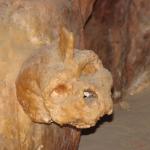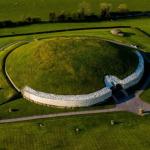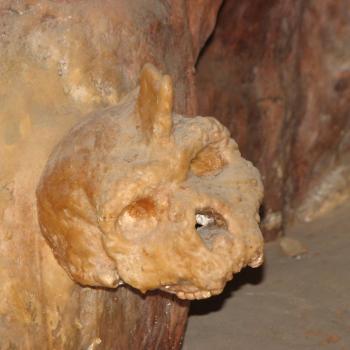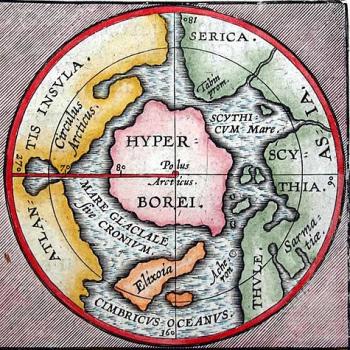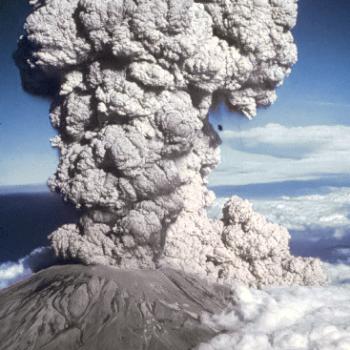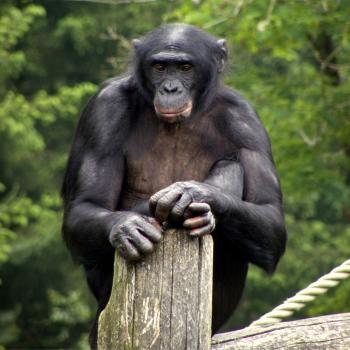To be a fly on the wall at a stone temple during a Neolithic-era celebration of the winter solstice would reveal a scene not unlike an arena rock concert, with smoke rising from an arc of fire pits and sunlight refracted through quartz, shooting rainbows through the audience.
In cross-cultural legends of the winter solstice, music, dancing, poetry and rainbow colors were essential to the sun’s rebirth. When the Japanese sun goddess Amaterasu hid in a cave in December, the other gods came to coax her out with roosters that sang continuously. They built fires and erected the “True Sakaki tree of the Heavenly Mt. Kagu,” decorating it with jewels and a mirror.
One of the gods danced on a platform and laughed so hard that everyone else laughed. Watching through a small opening in the cave, Amaterasu began to laugh too and the cave opening grew wider and wider and suddenly light filled the world. The roosters crowed and plants began to grow. Similar tales of releasing the sun from a cave in midwinter are found in the Avestan texts of ancient Persia and the Vedic hymns of India, both dating back about 3,000-years.
Across the ancient world, solstice pilgrims would travel great distances to the nearest sacred temple. Along the way they’d watch for the Ursid Meteor showers streaking toward the southeast horizon where the sun would rise on the winter solstice. The solstice pilgrims hoped the rebirth of the sun would infuse them with the divine energy necessary to heal their bodies and spirits. All the best musicians, dancers, and every healer in the region would be there.
Along the rivers of Asia, trekkers enjoyed the sweet-smelling white flowers of sacred plum and apricot trees, known as symbols of purity and perseverance, which still bloomed in December. Across western Europe, travelers would stop to gather winter-blooming berries from mistletoe climbing on oak and apple trees.
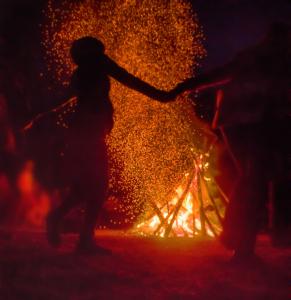
Waking up the sun
As the solstice pilgrims neared the gathering place the light of bonfires blazed in the night and the smell of roasting wild cattle wafted in the air. Cooks used antlers to scoop heated quartz stones from fire pits into bubbling kettles. Depending on the location, emmer beer, maize beer or malt liquor would flow and psychoactive plants from cannabis to mushrooms were consumed.
For the first three days of the week-long winter solstice celebration, the focus was to wake up the dying sun. Through the longest night of the year bonfires burned as steam rose from the bodies of the musicians and dancers. From Cambodia to India and Egypt, musicians are frozen in stone at megalithic temples directly aligned to the winter solstice. At Cambodia’s Angkor Wat they play double-headed drums, hour-glass drums, barrel drums, horns, gongs, chimes, cymbals, and conch shells. In India, sculpted musicians at the Sun Temple at Konârak play drums, flutes, lyres, and cymbals. At the Temple at Karnak in Egypt, court musicians play the sistrum (a rattle), harps, flutes, and tamourines.
The healing spirit of steam
Cross-cultural evidence from winter solstice-aligned temples suggests that steam was part of winter solstice rituals held in the inner sanctum. Commonly found at sacred sites, quartz is highly efficient at retaining heat, making it perfect for saunas and sweat lodges. Large chambers inside megalithic mounds dating back more than 5,000 years in Neolithic Europe could have doubled as saunas, recreating the hot and moist condition of the womb. Many cultures have equated steam with the soul or essence of life.
About 100 yards across and 30 feet high, the 5,200-year-old megalithic mound at Brú na Bóinne in County Meath, Ireland, is slightly egg-shaped with a 60-foot passage leading to a central chamber that’s topped by a 20-foot dome. Every year the dawning sun on the winter solstice still shines down the passage and into the chamber, which comfortably holds 10 people. Several authors have speculated about possible esoteric rituals held at Brú na Bóinne yet none have suggested it was a sauna. Among the oldest practices in recorded history, all the elements of a sauna are present inside the mound.
Until recently redirected, a year-round spring once surfaced in the 60-foot passage to the chamber, delivering sacred water directly from the underworld. A flat rock placed over a small opening at the top of the dome and a hide hung over the passage entrance makes the central chamber into a sauna. Three large stone basins with smooth bowls sit in small recesses to the east, west, and north.
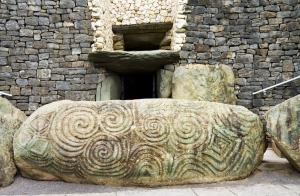
A Neolithic sign
Another clue can be found in the massive Entrance Stone just outside the mound. The deeply-etched carving shows diamond-shapes with lines radiating outwards, perhaps symbolizing heat radiating from quartz. The radiating lines morph into spirals, possibly representing clouds of steam. The Entrance Stone may have been a Neolithic sign delivering the message: Line up here for the sauna. (Etched in stone just above the stone basin in the back recess of the central chamber is a triple spiral, or triskelion.)
Corroborating mythic evidence is found in a legend describing three princes of ancient Ireland who traveled to Brú na Bóinne to learn the wisdom of kings, a process that included fasting for three days in the darkness of the central chamber. Adding steam to the experience of fasting and sensory deprivation would be consistent with the spiritual practices of numerous ancient and indigenous cultures.
Plugging the leak
Perhaps the most remarkable piece of evidence that the central chamber at Brú na Bóinne doubled as a sauna may have been overlooked by archaeologist Michael J. O’Kelly, who excavated and partly reconstructed the mound in the 1970s.
The builders of Brú na Bóinne caulked joints and cut grooves in stone as part of a successful effort to keep the central chamber dry, an impressive engineering achievement described in detail by O’Kelly in his book, Newgrange: Archaeology, art and legend (Thames and Hudson, 1982).
But O’Kelly found one exception to the masterful redirection of water away from the central chamber. It seems that during the winter months a steady drip fell directly into the stone basin in the east recess. This phenomenon was first recorded by Edward Lhwyd just after the mound was discovered in 1699.
Rather than interpreting water dripping into a sacred basin as purposeful, O’Kelly described it as a “leak” and installed a series of concrete drain pipes above the chamber to plug it. Rainwater or snowmelt dripping into the basin only in winter – and only dripping into the east-facing basin – suggests possible links to the celebration of sunrise on the winter solstice.
In the inner sanctum of the solstice-aligned Sun Temple at Konârak in India, the floor slopes to the north toward a drain, suggesting water was used during winter solstice ceremonies. The inner sanctuaries of Egyptian temples represented Nun, “the genuine great sea of the first occasion,” and featured a pyramidal Benben stone that mythically arose from the waters.
Rainbows in the dark
Mysterious steam rituals practiced in dark inner sanctums may have included gemstones that reflected and refracted the winter solstice sun, lighting up the coiling steam with scattered beams of colored light. It would have been simple enough to strategically place a chunk of transparent quartz to refract the incoming sunbeams.
In the inner sanctum of the Sun Temple at Konârak once stood a green chlorite statue of the sun god Surya embedded with gems that would have refracted colors in the dawning solstice sun. Hindu texts say that on the winter solstice, Surya symbolically turns his chariot north, and “wears a rainbow robe adorned with poetry.”
In Los Padres National Forest in southern California are several caves where Native Americans made holes for the sun to shine through on the winter or summer solstice, including a cave at Painted Rock in the high grasslands of the Sierra Madres. In 1978, a group of students placed a polished crystal in a small five-sided hole that Native Americans had cut out in the floor of the cave. They found that at dawn on the summer solstice, the sun shined through the hole in the cave and onto the crystal, illuminating the darkness with rainbows.
The use of refractive crystals wasn’t limited to caves or inner chambers. Gemstones and quartz crystals were used to bathe the outdoor audience in colored light as well. As the highest point in the area, the slabs of polished quartz crystal that once topped the Pyramid at Giza were the first to catch the rays of the sun at dawn, refracting them into the colors of the rainbow. It must have been quite a sight to wake up to this clock tower of color every morning.
In The Dawn of Astronomy: A Study of Temple Worship and Mythology of the Ancient Egyptians (Cassell and Company, 1894), physicist Norman Lockyer wrote of an ancient solar ceremony in which a Hebrew high priest faced the dawning sun while wearing a bejeweled breastplate, refracting colored beams of light onto the congregation. Evidence of jeweled breastplates has also been found in earlier Sumerian, Babylonian, and Egyptian cultures. Being bathed in colored light would have a dramatic effect on any gathering, possibly contributing to an ecstatic spiritual experience.
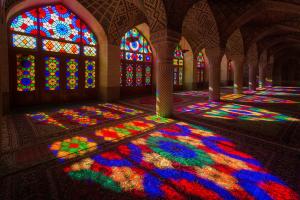
Perfecting the light
While the adoption of the Hebrew Bible ended solar worship, the bejeweled breastplate was featured in the Book of Exodus and survived in a new form all the way to the 20th century.
In Exodus 28:15, God told Moses how to make a breastplate with 12 “glowing (gem)stones” laid out in four rows of three. The breastplate was associated with two ancient Hebrew words: urim, meaning light, and thummim, meaning completeness or perfection. The concept may have been that white light from the sun passing through refractive gems is “perfected” into rainbow colors.
The leading scholar on the breastplate, Dr. Cornelis Van Dam, believes it was meant to generate a miraculous light from God that contains a message. In the only known Hebrew ritual connected to the breastplate, congregants asked the high priest a yes or no question. After staring into the gems, the priest answered yes or no.
Colored glass
The practice of creating colored light at sacred sites survived in the form of stained glass across the Near East and Europe. The first production of colored glass dates back 2,700 years to Nineveh in northern Iraq. Mosques, palaces, and public spaces have long been decorated with stained glass throughout the Islamic world. Synagogues and churches also have a centuries-long tradition of using stained glass to heighten the spiritual experience. The first stained glass in Europe appeared in Christian churches and monasteries in Britain about 1,300 years ago. Many churches are oriented east-west so the colored glass catches the light of the rising and setting sun.
In Abbell Synagogue at the Hadassah University Medical Center in Israel, the Jewish painter Marc Chagall created stained glass windows that were dedicated on February 6, 1962. The 12 window treatments were inspired by passages in the Bible, including the description of the gem-studded breastplate in Exodus 28:15. The colors of each section of windows, facing north, west, east, and south, correspond to the rows of gemstones specified in the breastplate, including topaz, moonstone, sapphire, and amethyst.
(Part II will explore evidence suggesting the reincarnation of souls was once believed to occur at dawn on the winter solstice, to be published on Sunday, Dec. 18. Ben H. Gagnon is an award-winning journalist and author of Church of Birds: An Eco-History of Myth and Religion, scheduled for release in March 2023 from John Hunt Publishing and now available for pre-order. More information can be found at churchofbirds.godaddysites.com.)

